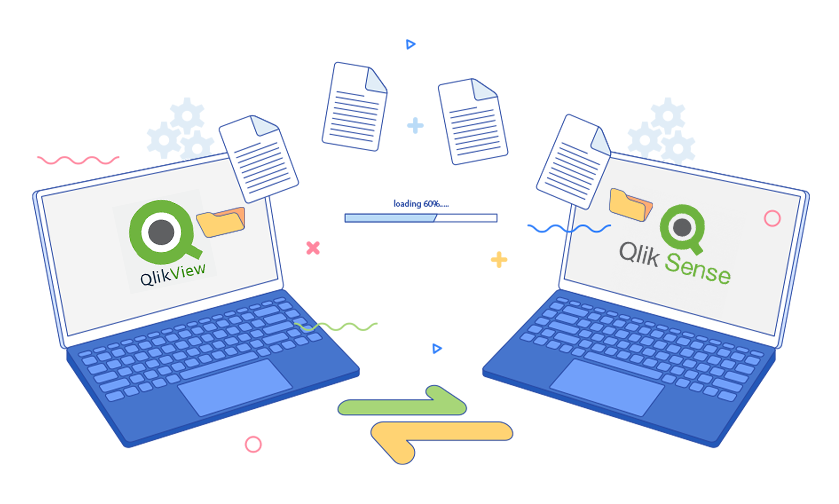Company:
A large ready-made garments manufacturer based in India
The Challenge:
The company wants to migrate its reporting and MIS from Qlikview to Qlik Sense to use the power of Cloud, mobile reporting, advanced data visualization, improved collaboration and better storytelling capabilities. Both Qlikview and Qlik Sense are developed by Qlik Technologies and have similar data models, the migration however requires proper planning and execution.
KPIs to be migrated:
- Account Receivables
- Account Payables
- Dispatch and Returns Management
- Inventory Reports
- Sales Forecast
- Requisition Analytics
- Fulfilment Analysis
- Planning
How Technoforte undertook successful migration and executed this project:
- Evaluated the current deployment to determine the extent of the migration project scope and evaluate the current QlikView environment. Determined which apps, data connections, data models, and visualisations from QlikView need to be transferred to Qlik Sense. Identify any specialised scripts or add-ons that Qlik Sense would need to modify or replace. Understood KPIs, KPAs and associated logic.
- Acquainted the customer with new Qlik Sense capabilities and its mobile-first focus. Identified new capabilities and BI best practises available in Qlik Sense so that they could be leveraged and adopted early on during migration. Identified data that could be democratized and self-service analytics be introduced.
- Created files in the Development Environment available in Qlik Sense. Used the Convertor available under in the Development Environment. Applied modern and responsive design capabilities available in Qlik Sense.
- KPI-wise scripts were identified and refactored from Qlik to Qlik Sense. Clean Data was migrated to Qlik Sense
- Used Extractor tool to get KPI-wise data such as:
- Tables
- Fields etc.
- Data brought into Qlik Sense was filtered, cleansed and formatted, as required. For example; correct date format was used, required decimal spacing was applied, sum/average/percentage etc. was applied, wherever necessary, instead of actual numbers
- The Visualization had to be re-developed, so the appropriate visual tools were applied, i.e.:
- Selection of appropriated graphs
- Adding the correct dimensions and expressions
- Testing and Validation: Verified that the migrated Qlik Sense apps are operating properly and providing accurate results by thoroughly testing and validating them. Verified that data connections, data models, expressions, and visualisations are functioning as intended by validating them. Finalized reports in required formats, for user visualization and distribution.
- Provided User Training and Change Management: Aided users in switching from QlikView to Qlik Sense by providing training and assistance. In addition to instructing users on how to access and utilise the migrated apps, educate them on the new Qlik Sense features and functions.
- Deployment and Cut-over: After users had been taught and the migrated Qlik Sense apps had been validated, Technoforte planned and carried out the switch from QlikView to Qlik Sense. This entailed decommissioning the QlikView environment and moving the apps and data interfaces to the production environment.
- Post-migration Support: Technoforte offered users on-going assistance and response to any problems or inquiries that developed following the migration. A keen eye was kept on the migrated apps’ usability and performance, and made any necessary improvements.
It is essential to remember that the migration procedure may vary based on the size and complexity of the QlikView deployment as well as the particular needs of the Qlik Sense installation. To ensure success, careful preparation, exhaustive testing, and efficient change management are essential.









